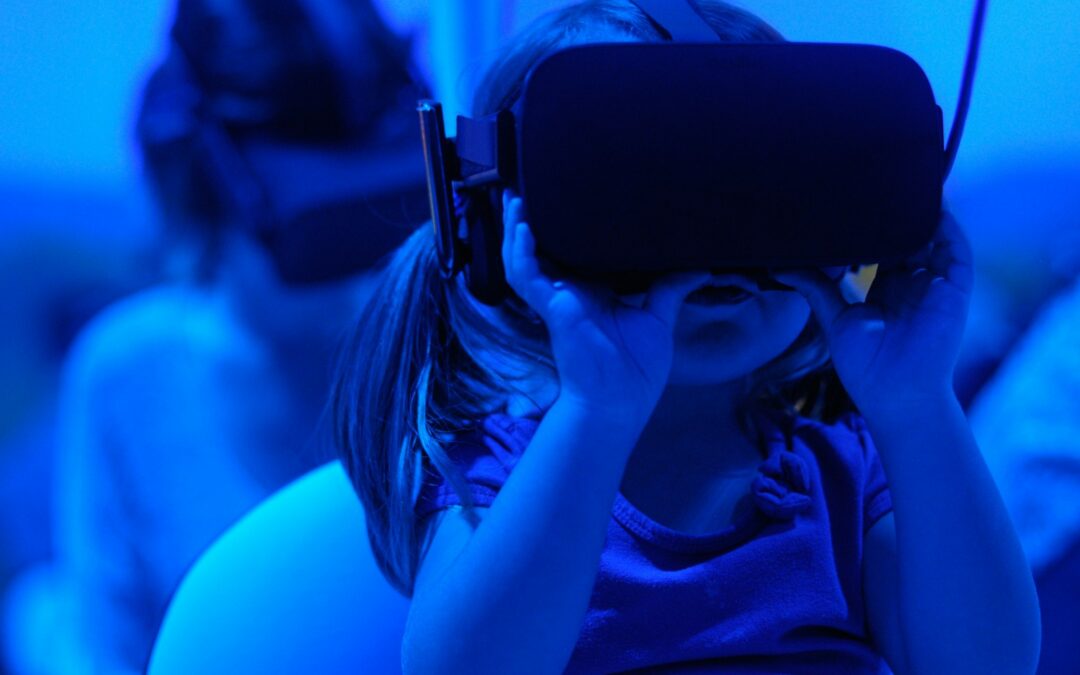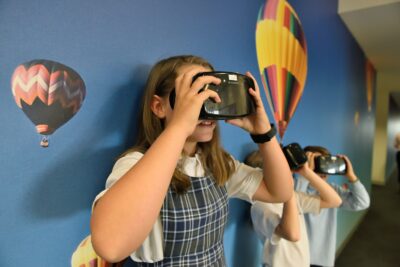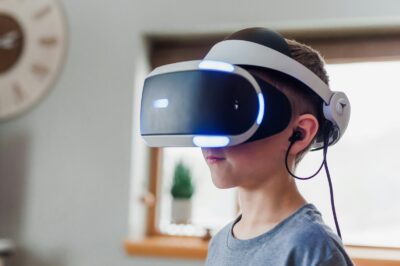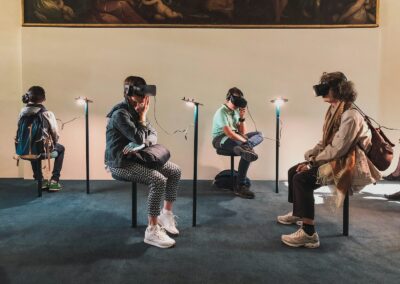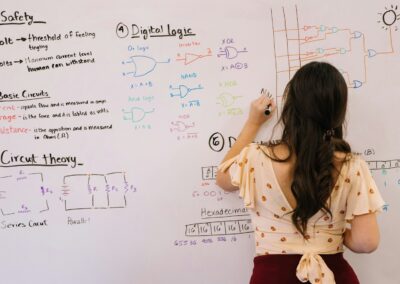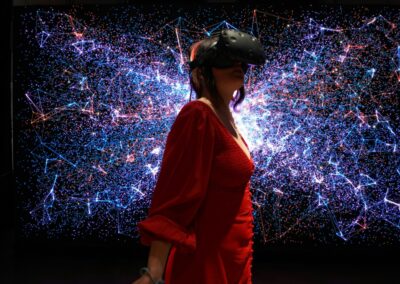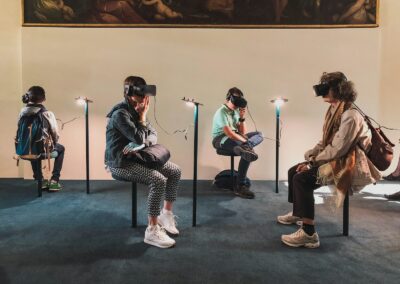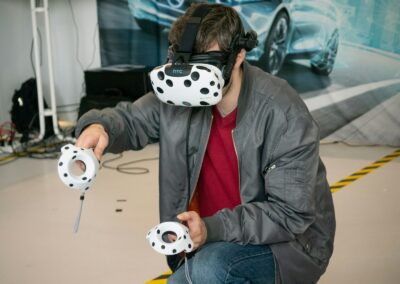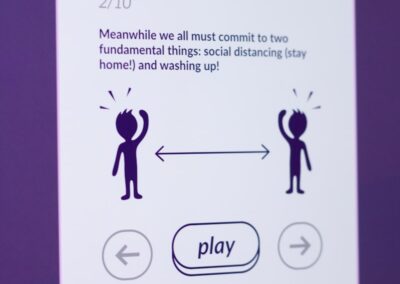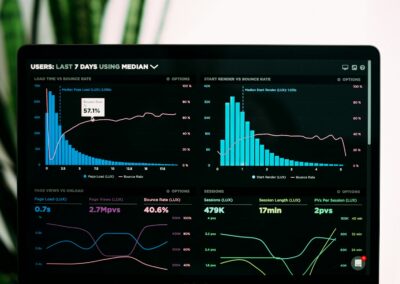The Role of Virtual Reality in Modern Education
Introduction to Immersive Learning
The role of virtual reality in immersive learning is transforming education across various disciplines, providing unprecedented opportunities for interactive and engaging learning experiences. Virtual reality (VR) headsets and interactive software enable students to immerse themselves in virtual environments, enhancing their understanding and retention of complex concepts. This innovative approach to education is particularly relevant in regions like Saudi Arabia and the UAE, where investments in modern technology and educational reforms are paving the way for a future-ready workforce.
In Riyadh and Dubai, educational institutions are increasingly adopting VR technology to create dynamic and interactive learning environments. These immersive experiences allow students to explore historical sites, conduct scientific experiments, and interact with virtual models, making learning more engaging and effective. By leveraging VR technology, educators can cater to diverse learning styles and needs, ensuring that every student has the opportunity to excel.
Moreover, the integration of VR in education supports the development of critical thinking and problem-solving skills. As students navigate virtual scenarios and overcome challenges, they learn to apply theoretical knowledge in practical contexts. This hands-on approach to learning not only enhances academic performance but also prepares students for real-world applications in their future careers.
Enhancing STEM Education with VR
One of the most significant applications of virtual reality in education is in the field of Science, Technology, Engineering, and Mathematics (STEM). VR headsets and interactive software provide students with immersive experiences that make abstract concepts tangible. For example, students can explore the intricacies of the human body in a virtual anatomy lab, conduct virtual chemistry experiments, or simulate engineering projects, all within a safe and controlled environment.
In Saudi Arabia and the UAE, where STEM education is a national priority, VR technology is playing a crucial role in inspiring the next generation of scientists and engineers. By offering interactive and visually stimulating content, VR makes STEM subjects more accessible and engaging for students. This is particularly important for female students, who are traditionally underrepresented in STEM fields. VR technology can help bridge this gap by creating inclusive and inspiring learning experiences.
Furthermore, VR technology in STEM education promotes collaborative learning. Students can work together in virtual environments, share ideas, and solve problems collectively. This fosters teamwork and communication skills, which are essential for success in the modern workforce. By integrating VR into their curricula, educational institutions in Riyadh and Dubai are preparing students to thrive in a technology-driven world.
Virtual Reality in Professional Training
Beyond traditional education, virtual reality is also revolutionizing professional training and development. VR headsets and interactive software provide realistic simulations that allow professionals to practice and refine their skills in a risk-free environment. This is particularly beneficial for industries such as healthcare, aviation, and manufacturing, where hands-on experience is crucial for competence and safety.
In the healthcare sector, for instance, VR technology enables medical professionals to simulate surgeries, diagnose virtual patients, and practice emergency response procedures. This not only enhances their technical skills but also improves their decision-making and problem-solving abilities. In Saudi Arabia and the UAE, where healthcare excellence is a strategic priority, VR-based training programs are helping to elevate the standards of medical education and practice.
Similarly, in the aviation industry, VR simulations provide pilots and maintenance technicians with realistic training scenarios that replicate real-world conditions. This enhances their operational readiness and ensures that they are well-prepared to handle complex situations. By incorporating VR into their training programs, organizations in Riyadh and Dubai are fostering a culture of continuous learning and professional growth.
Leadership and Management in Integrating VR Technology
Strategic Implementation of VR in Education
Effective leadership and management are essential for the successful integration of virtual reality technology in education and training programs. Business executives and educational leaders must develop a clear vision and strategy for incorporating VR into their institutions. This involves setting specific goals, allocating resources, and fostering a culture of innovation and experimentation.
In regions like Saudi Arabia and the UAE, where educational reforms are a national priority, leaders must stay informed about the latest advancements in VR technology and their potential applications. This includes collaborating with technology providers, educators, and policymakers to create a supportive ecosystem for VR integration. By taking a proactive approach, leaders can ensure that their institutions remain at the forefront of educational innovation.
Moreover, leadership in VR integration involves continuous evaluation and improvement. Institutions must regularly assess the effectiveness of their VR programs, gather feedback from students and educators, and make necessary adjustments. This iterative process ensures that VR technology is being used to its fullest potential and that it continues to meet the evolving needs of learners.
Building a Skilled Workforce
The successful integration of VR technology in education and professional training requires a skilled workforce that is proficient in both the technical and pedagogical aspects of VR. This includes educators, instructional designers, and IT professionals who can develop and deliver high-quality VR content.
In Riyadh and Dubai, investments in professional development and training are essential for building this skilled workforce. Educational institutions and organizations must provide ongoing training and support for their staff, ensuring that they are equipped with the knowledge and skills needed to effectively use VR technology. This includes training in VR content creation, instructional design, and technical troubleshooting.
Additionally, fostering a culture of collaboration and knowledge-sharing is crucial for the success of VR integration. By encouraging educators and professionals to share their experiences and best practices, institutions can accelerate the adoption of VR technology and maximize its impact. This collaborative approach also promotes innovation and creativity, driving continuous improvement in VR-based education and training programs.
Navigating Challenges and Opportunities
While the integration of virtual reality in education and professional training offers numerous benefits, it also presents several challenges that must be addressed. These include technical issues, such as hardware compatibility and software development, as well as pedagogical challenges, such as designing effective VR learning experiences.
To overcome these challenges, institutions must adopt a strategic and holistic approach to VR integration. This involves investing in high-quality VR hardware and software, as well as providing ongoing technical support for educators and learners. Additionally, institutions must prioritize the development of evidence-based VR content that aligns with their educational goals and objectives.
Furthermore, addressing the ethical and privacy concerns associated with VR technology is essential. Institutions must ensure that their VR programs comply with relevant regulations and standards, and that they protect the privacy and security of learners’ data. By taking a responsible and transparent approach, institutions can build trust and confidence in their VR programs.
Conclusion
In conclusion, the integration of virtual reality in immersive learning is revolutionizing education and professional training in Saudi Arabia, the UAE, Riyadh, and Dubai. By leveraging VR technology, institutions can create interactive and engaging learning experiences that enhance students’ understanding and retention of complex concepts. Effective leadership, strategic implementation, and continuous evaluation are essential for maximizing the impact of VR integration. As educational institutions and organizations embrace VR technology, they are paving the way for a future-ready workforce that is equipped with the skills and knowledge needed to thrive in a technology-driven world.
#VirtualReality #ImmersiveLearning #VRHeadsets #InteractiveSoftware #EducationalTechnology #AI #ArtificialIntelligence #Blockchain #TheMetaverse #GenerativeAI #ModernTechnology #BusinessSuccess #Leadership #ManagementSkills #ProjectManagement #SaudiArabia #UAE #Riyadh #Dubai

